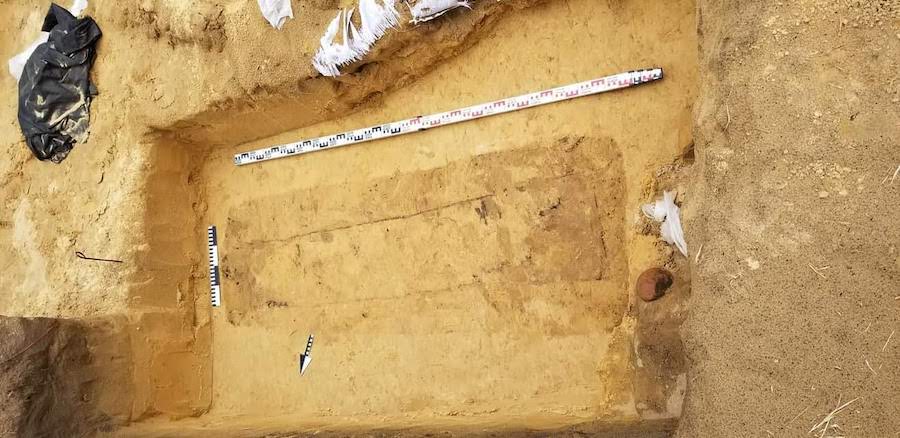
Part six of a continuing series about experiences on an archaeological dig in Poland
Last summer I was at an archaeology field school run by the Slavia Foundation in Poland. The site had both Bronze Age (IV and V Period) cremations and Early Modern (16th -18th century) coffin burials. Scraping away layers of dirt with a trowel, I was looking very closely for changes in the color of the dirt. This could reveal whether or not I had stumbled upon an Early Modern coffin burial.
Features, or items in the dirt that cause the ground to change color, were usually much lighter or much darker than the dirt around it at the site in Poland. The dirt inside the features or surrounding the features was called ‘fill’. Although I had never been on an archaeology dig before, it did not take long for the other students and I to tell when we had found features at the site. As a lot of archaeology sites do not have such clear changes in the dirt, we considered ourselves lucky.
“So some of the feature fill here [in Poland] is like kind of marbly and that’s because the sand moves differently,” said Ashley Stewart, the field osteologist. “Like for example, in Alabama, Mississippi, it’s mostly clay or like silty loam, and those dirts move differently than sand. Sand moves more fluidly and so it creates different looking features which is really cool.”
The other students and I were looking for coffin shadows, or the darker spots in the dirt that resembled a rough coffin outline. Due to the few hundred years of decomposition, the dirt above where the coffins were buried had changed color. The fill surrounding the coffins stayed the same.
“So in Mississippi, the cemetery I dug there […] the fill is like black,” Stewart said. “It’s so, so, so dark, and then you have this lighter, typically red clay around it. But every feature in the U.S. that I’ve ever dug in my entire life has been dark. And it’s crazy because here some of the features are light in color, and it blew my mind. And I know it’s just because the dirt’s different, but like it was crazy to see. We even joked one time, like two or three years ago […] there was this weird circle in the ground, but it was light in color and every single person on that dig was like ‘I’ve never seen a feature be lighter than the ground around it’ and now I have.”
The Early Modern burials were Christian burials, as the remains were placed in coffins and laid east to west. This helped make it obvious when we had a found a coffin shadow, for only so many features have this characterization. Just a few feet under the coffin shadows would be human remains and decomposed coffin wood.
“[Right now] we have a clear outline but don’t have a burial outline,” said Alexis Henderson, a student at the archaeology field school. “The burial line is right as you’re about to hit the skeleton.”
Just as the decomposed coffin wood changed the color of the dirt, the decomposing remains do the same. The change in color due to decomposed remains is called the burial line, and this means one should be able to find the skeletal remains by scraping some dirt away with a trowel.
The first sites that Adam Szczesny, one of the archaeology instructors, worked on were rather difficult, as it took him a long time to tell the features apart. Instead of a cemetery, Szczesny had excavated city remains and a Roman War camp in Syria and Bulgaria.
“In Syria, it was really different because when I went there and our professor showed us the site, I saw nothing,” Szczesny said. “And he told us that it is a city, and I couldn’t recognize the walls from the dirt because they were so similar. After a few weeks I saw a slight difference, and it was obvious for me where the house ended, where the suburbs were. Every site is different. In Poland […] every dig is quite visible after taking the first layer of soil off.”
Written by: Rachel Paul— science@theaggie.org



